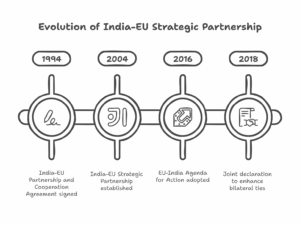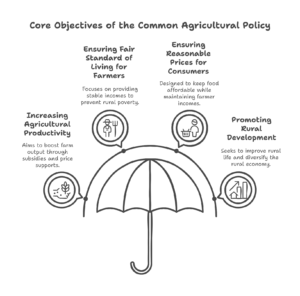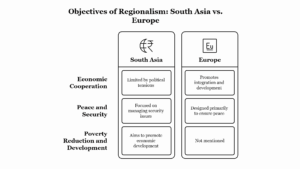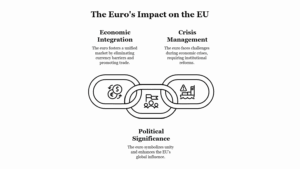The party system in Canada is a critical aspect of its political structure, which facilitates the functioning of democracy by organizing political ideologies and providing citizens with choices in elections. Canada’s political landscape is dominated by a multi-party system, where several political parties compete for power at the federal and provincial levels. This party system is characterized by several unique features, which reflect the nation’s history, culture, and political traditions.
1. Dominance of Major Political Parties:
Canada’s party system is dominated by three major political parties: the Liberal Party, the Conservative Party, and the New Democratic Party (NDP). These parties have been the principal contenders in most federal elections, with each representing distinct ideological orientations:
- The Liberal Party is generally positioned at the center-left of the political spectrum. It has traditionally supported a mixed economy, social welfare policies, and a more interventionist role for the state in areas such as healthcare and education.
- The Conservative Party represents a center-right ideological position, advocating for free-market policies, fiscal conservatism, and limited government intervention in the economy. It emphasizes traditional values and individual rights.
- The New Democratic Party (NDP), positioned on the left of the political spectrum, advocates for greater government involvement in social and economic issues, such as universal healthcare, workers’ rights, and environmental protection.
While these three parties dominate federal politics, other smaller parties, such as the Bloc Québécois (which advocates for Quebec nationalism) and the Green Party, also play significant roles, particularly in certain regions.
2. Federal and Provincial Party Systems:
While Canada has a federal system of government, with power shared between national and provincial governments, political parties operate at both levels. At the federal level, the party system is more centralized, with parties competing for control of the House of Commons and the federal executive power (the Prime Minister). At the provincial level, parties may operate under similar or entirely different platforms, depending on regional concerns.
For example, the Bloc Québécois is primarily focused on Quebec’s independence and operates mostly within Quebec, while the New Democratic Party has a stronger base in provinces such as British Columbia, Ontario, and Saskatchewan. Similarly, provincial party systems can sometimes operate independently, with some provinces seeing the rise of regional parties, like the Alberta Progressive Conservative Party or the Ontario Progressive Conservative Party.
3. The Role of Coalition Politics:
Canada’s political system is typically characterized by minority governments, especially since the rise of regional and smaller parties in the 21st century. The nature of Canadian elections, particularly the First-Past-the-Post (FPTP) electoral system, often results in one party winning a plurality of seats without securing an overall majority. This has led to coalition politics, where the governing party relies on the support of smaller parties to pass legislation.
For example, the Liberal Party and the New Democratic Party have occasionally formed informal or formal alliances to maintain a government when no single party achieves a majority. These coalitions reflect the broader ideological spectrum of the Canadian electorate and represent a pragmatic approach to governance in a highly diverse society.
4. Regionalism and Party Support:
One of the most important features of the Canadian party system is the regionalization of party support. Different regions of the country have varying political preferences, and this has led to the rise of regional parties that focus on issues pertinent to their specific provinces. This is particularly evident in Quebec, where the Bloc Québécois has significant support, pushing for greater autonomy or even independence for the province. Similarly, Western Canada has seen the rise of parties like the Western Canadian Reform Party (which eventually merged with the Conservative Party) to represent the interests of western provinces.
Regionalism also plays a critical role in how national parties position themselves on issues such as natural resource development, environmental policy, and immigration. For example, political parties may tailor their platforms to appeal to concerns in resource-rich provinces like Alberta, which have distinct economic and social priorities compared to urban centers in Ontario or Quebec.
5. Influence of Political Ideology:
The party system in Canada is fundamentally shaped by political ideology, with the dominant parties occupying the center-left (Liberals), center-right (Conservatives), and far-left (NDP) positions. The debate between these ideological positions shapes political discourse in the country, as well as the direction of policy and governance.
- The Liberal Party has traditionally supported progressive taxation, government investment in social welfare programs, and multiculturalism.
- The Conservative Party, on the other hand, has advocated for tax cuts, limited government, individual freedoms, and a strong national defense policy.
- The NDP, while generally advocating for progressive social policies, has championed issues such as income inequality, universal healthcare, environmental protection, and workers’ rights.
6. Electoral System and Impact on the Party System:
Canada uses the First-Past-the-Post (FPTP) electoral system, which tends to favor larger parties, as it requires candidates to secure the most votes in a riding (electoral district) to win a seat. While this system creates a relatively stable party system, it has been criticized for not accurately representing the diversity of political preferences within the electorate. Smaller parties, particularly those with strong regional bases, often struggle to translate their votes into seats.
For instance, the Green Party has consistently garnered significant support in national elections but has failed to secure a proportional number of seats in the House of Commons. Similarly, the Bloc Québécois often performs well in Quebec, but its influence is limited outside the province.
7. Impact of Social Movements:
Social movements and issues often influence party platforms in Canada, prompting the emergence of parties that represent specific issues. For example, environmental concerns have led to the rise of the Green Party, which now participates actively in national debates on climate change, environmental conservation, and sustainable development. Similarly, Indigenous rights, gender equality, and LGBTQ+ issues have increasingly shaped party policies, pushing them to adopt more inclusive and progressive platforms.
8. Party Funding and Electoral Reforms:
Recent discussions and reforms around party financing and electoral procedures have sought to enhance transparency and fairness in Canada’s party system. For example, public funding of political parties has been introduced to reduce the influence of private donations and corporate interests on party politics. Additionally, there have been discussions about reforming the electoral system to adopt a more proportional representation model, which would likely alter the dynamics of the current party system.
Conclusion:
The party system in Canada is dynamic, reflecting the country’s diversity, regionalism, and political ideologies. While dominated by the Liberal, Conservative, and New Democratic Parties, Canada’s system also features smaller parties that influence federal and provincial politics. The First-Past-the-Post electoral system plays a significant role in shaping the party landscape, fostering a system where regional and ideological divides are critical in shaping national discourse. The evolution of this system continues to be shaped by changing public preferences, economic concerns, and social movements.







Leave a Reply